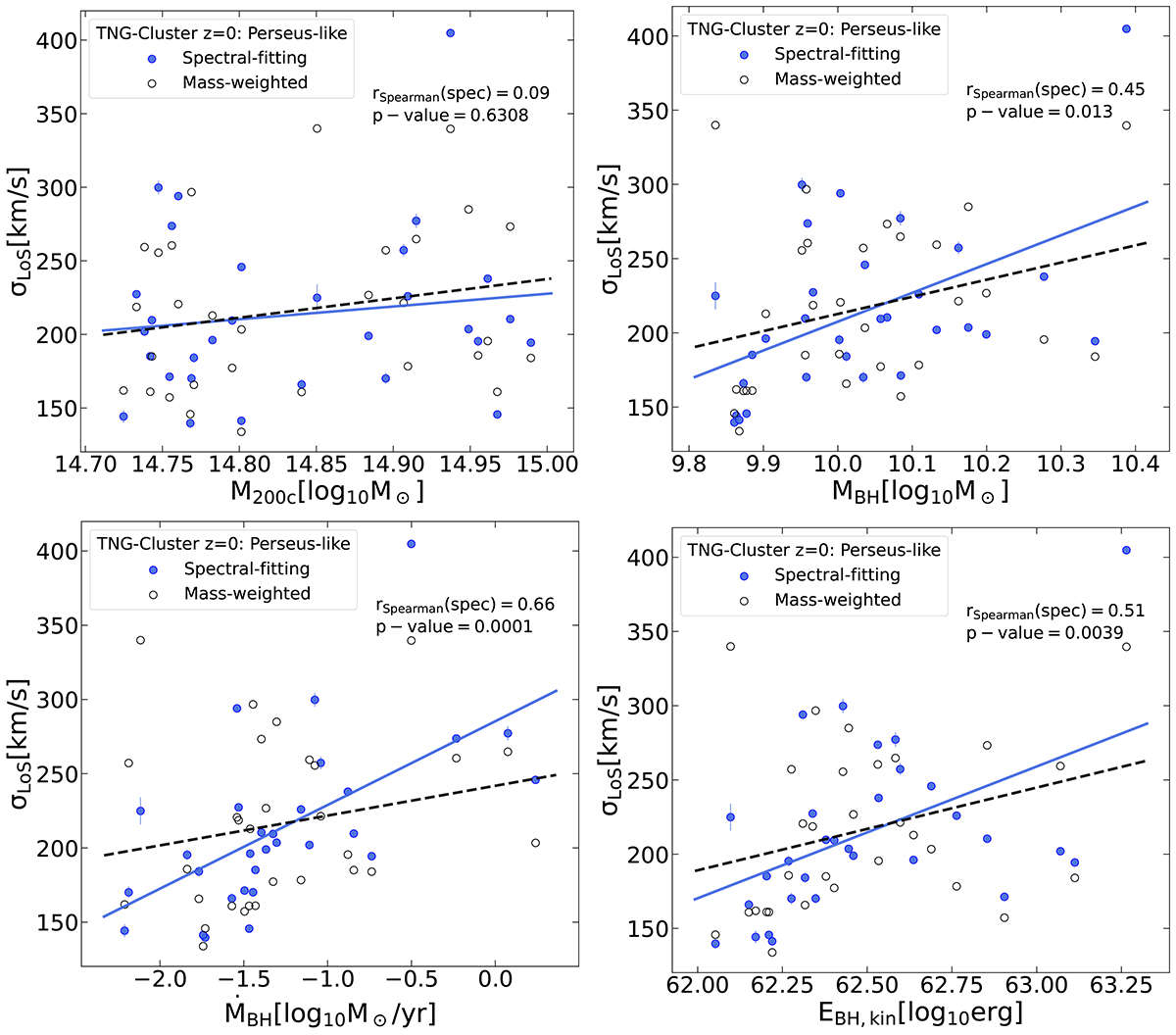Fig. 6.

Download original image
Dependence of the X-ray-inferred velocity dispersion of the ICM on cluster mass (M200c) and central SMBH properties according to TNG-Cluster. For the latter, we show SMBH mass (MBH, the single largest in each halo), instantaneous accretion rate (ṀBH), and accumulated kinetic feedback energy (Ekin). The solid (dashed) line represents the best-fit linear relation between the spectral-fitting (mass-weighted) velocity dispersion and cluster mass or SMBH properties. Cool-core clusters in the Perseus mass range exhibit larger levels of turbulence if they host a more massive SMBH, a SMBH that is accreting at higher rates, or a SMBH that has released more kinetic feedback on its surroundings throughout its life time.
Current usage metrics show cumulative count of Article Views (full-text article views including HTML views, PDF and ePub downloads, according to the available data) and Abstracts Views on Vision4Press platform.
Data correspond to usage on the plateform after 2015. The current usage metrics is available 48-96 hours after online publication and is updated daily on week days.
Initial download of the metrics may take a while.


